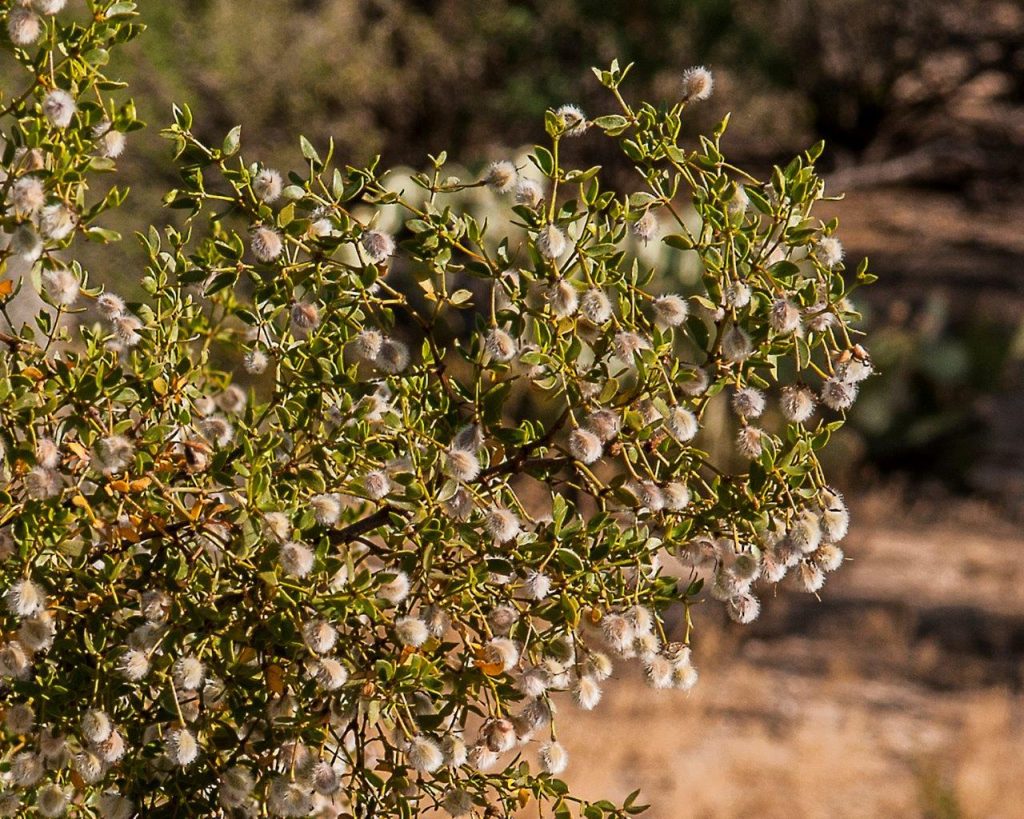Larrea tridentata
- Photo(s): Brian Gersten www.briangersten.com
If you hold a branch in your hands, breathe out on it and then inhale, you will smell the resiny fragrance that we associate with this plant and rain

I read a book many years ago entitled “The Desert Smells Like Rain”. When I think of rain in the desert my mind goes to the fragrance that permeates the air, especially after the rains. This is the aroma of Creosote bush.
Creosote bush (Larrea tridentata) is an evergreen shrub which can grow to 6 feet tall. They are usually openly branched but when the conditions are right can appear lush and vibrant. The leaves are small, dark green and resinous. This resin helps to prevent evaporation allowing the plant to survive in dry, hot windy conditions. Yellow flowers appear usually in the spring. If you hold a branch in your hands, breathe out on it and then inhale, you will smell the resiny fragrance that we associate with this plant and rain. Not the same as creosote used to treat timber! That’s a petroleum-based product that is unrelated to the Creosote bush.
Creosote bush is the most successful and widespread plant in the deserts of North America. Many desert plants use tap roots to reach moisture that lies deep beneath the surface and that doesn’t run off or evaporate readily. Others use thin, fibrous roots that grow just beneath the surface to capture rainwater quickly. Creosote uses both; it can catch water from brief rains and from deep underground resources as well. Its taproot can reach depths of 10 feet; it is so tough it can penetrate caliche, something that few plants can do. The shallow root system penetrates only a few inches into the soil but may spread out to cover as much as 50 square yards. These roots hydrate quickly and can use even brief rains.
Like cacti, Creosote stores water, minerals, and vital nutrients for dry spells. Retaining moisture and nutrients in its crown allows Creosote to bloom whether it rains or not. Creosote is nevertheless careful with its blossoms. Since there is no value in attracting pollinating insects after a blossom is fertilized, the petals of a fertilized blossom rotate a quarter turn thus making them less conspicuous. Insects then visit unfertilized blossoms preferentially. Because Creosote blooms both seasonally and opportunistically, it is not unusual to see plants during the late-summer monsoons putting out new shoots, blooming, and setting seed at the same time.
Etymology: Larrea is named for Bishop Juan Antonio Hernandez Perez de Larrea (1731-1803) in Valladolid, Spain, while tridentata means three-toothed, the appearance of the leaves being three-toothed.

